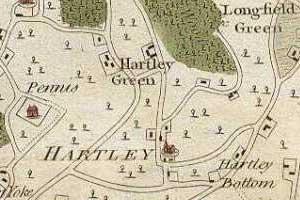Go To Section
Petersfield
Borough
Available from Cambridge University Press
Background Information
Right of Election:
in the burgage-holders
Number of voters:
unknown
Elections
| Date | Candidate |
|---|---|
| 10 Mar. 1604 | SIR WILLIAM HERVEY I |
| SIR WILLIAM KINGSWELL | |
| c. Mar. 1614 | SIR WALTER TICHBORNE |
| EDWARD SAVAGE I | |
| 30 Dec. 16201 | SIR RICHARD NORTON |
| SIR JOHN HIPPISLEY | |
| 16 Jan. 1624 | SIR JOHN JEPHSON |
| SIR JOHN HIPPISLEY | |
| 25 Apr. 1625 | SIR WILLIAM UVEDALE |
| SIR JOHN JEPHSON | |
| 20 Jan. 1626 | SIR WILLIAM UVEDALE |
| BENJAMIN TICHBORNE | |
| 29 Feb. 1628 | SIR WILLIAM UVEDALE |
| BENJAMIN TICHBORNE |
Main Article
Situated on the edge of the South Downs, Petersfield was a prosperous market town and centre for the local clothing and leather tanning industries.2 A borough by prescription, its government was vested in a mayor, constable, bailiff and two aldermen and tithingmen, and it regularly sent Members to Parliament from 1547. The franchise was confined to the burgage-holders, with the mayor acting as returning officer.3 A handsome town mace survives, dated 1596.4 Although never incorporated by royal charter, the inhabitants asserted in 1610 that Petersfield had been ‘time out of mind an ancient borough’; their claims to independence were nevertheless insufficient to defeat the lord of the manor, Sir Thomas Hanbury, an Exchequer auditor, who successfully prosecuted them in the Exchequer for the rights to certain waste lands.5 Hanbury was probably responsible for thwarting the borough’s subsequent attempt to obtain a charter, which was drawn up in 1612 but never passed the seals.6 He exercised no influence over the borough’s elections during the early Stuart period, which were dominated by the Nortons of Rotherfield, although Sir Richard Norton only once used his patronage on his own behalf.7
In 1604 the electors ‘by one assent and consent’ returned Sir William Hervey I, keeper of St. Andrew’s Castle, situated on the coast, and Norton’s kinsman, Sir William Kingswell, the highest rated subsidy payer in the town.8 Norton was probably responsible for nominating Sir Walter Tichborne in 1614, and the junior seat went to Edward Savage I, a Hampshire magistrate who was in desperate need of parliamentary privilege. In 1620 Norton reserved both seats for himself and his brother-in-law Sir John Hippisley, the marquess of Buckingham’s ‘principal favourite’.9 Hippisley sat again in 1624, this time with Sir John Jephson; both men had recently accompanied Charles and Buckingham to Spain. Jephson in turn sat again in 1625, though he conceded the senior seat to Norton’s cousin Sir William Uvedale. In the last two parliaments of the reign Uvedale was joined by Benjamin Tichborne, son of Sir Walter. There is no evidence that Petersfield pursued any legislation during the early Stuart period, and its Members, most of whom were drawn from the Hampshire gentry, presumably served without wages.
Authors: Virginia C.D. Moseley / Rosemary Sgroi
Notes
- 1. C219/37/218.
- 2. VCH Hants, iii. 111-16.
- 3. R.S. Atcheson, Rep. of Case of Petersfield, 10-11.
- 4. E.M. Yates, Petersfield in Tudor Times (Petersfield Pprs. v), 24.
- 5. E134/6Jas.I/Mich.1; Atcheson, 13-16.
- 6. VCH Hants, iii. 114-15.
- 7. E.A. Minty, Hist. Petersfield, 30.
- 8. C219/35/2/14; Yates, 22.
- 9. Chamberlain Letters ed. N.E. McClure, ii. 152.

